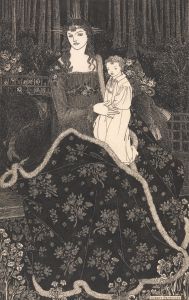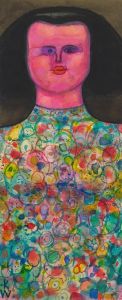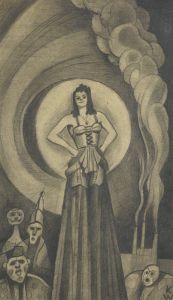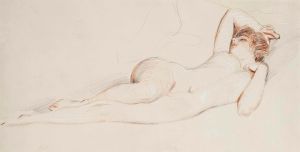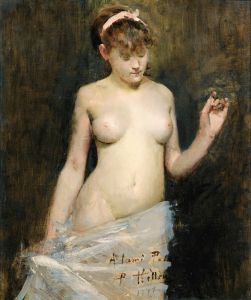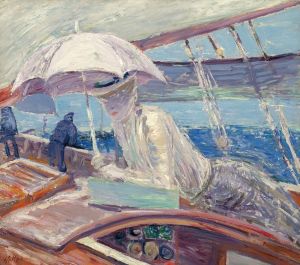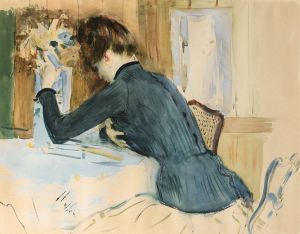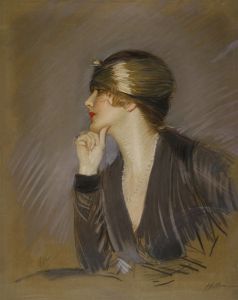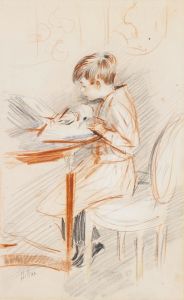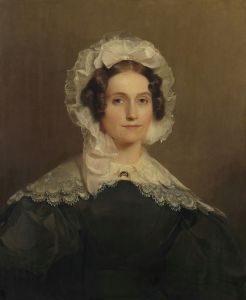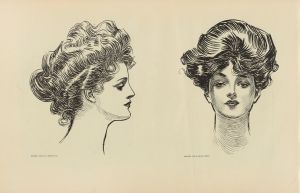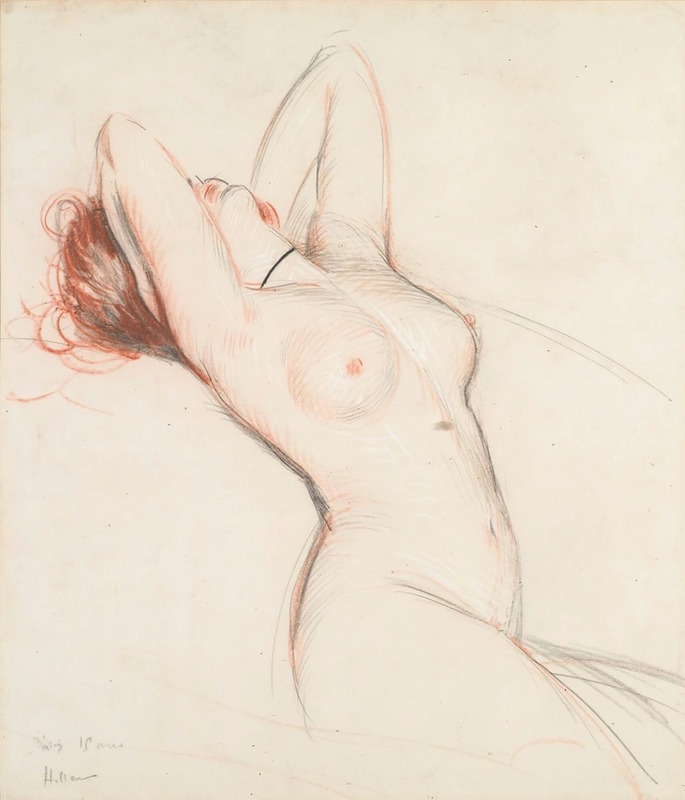
Nu
A hand-painted replica of Paul César Helleu’s masterpiece Nu, meticulously crafted by professional artists to capture the true essence of the original. Each piece is created with museum-quality canvas and rare mineral pigments, carefully painted by experienced artists with delicate brushstrokes and rich, layered colors to perfectly recreate the texture of the original artwork. Unlike machine-printed reproductions, this hand-painted version brings the painting to life, infused with the artist’s emotions and skill in every stroke. Whether for personal collection or home decoration, it instantly elevates the artistic atmosphere of any space.
Paul César Helleu was a French artist renowned for his portraits of beautiful society women, and his work "Nu" is one of his notable pieces. Helleu was born on December 17, 1859, in Vannes, France, and he became a prominent figure in the art world during the late 19th and early 20th centuries. He was particularly known for his mastery in drypoint, a printmaking technique that allowed him to create delicate and expressive lines.
"Nu," which translates to "Nude" in English, is a testament to Helleu's skill in capturing the elegance and grace of the female form. While specific details about the creation date and the model for "Nu" are not widely documented, it is consistent with Helleu's broader body of work that often celebrated femininity and beauty. His portraits typically featured women in fashionable attire or in intimate, relaxed poses, and "Nu" fits within this thematic exploration.
Helleu's artistic style was influenced by the Impressionists, and he was friends with several key figures in the movement, including Claude Monet and John Singer Sargent. This influence is evident in his use of light and his ability to convey a sense of immediacy and intimacy in his work. "Nu" likely reflects these qualities, showcasing Helleu's ability to blend realism with a sense of ethereal beauty.
Throughout his career, Helleu was highly sought after by the Parisian elite, and his portraits were considered a status symbol among the upper classes. His work was exhibited in prestigious venues, and he received numerous commissions from wealthy patrons. Despite the popularity of his portraits, Helleu's nudes, such as "Nu," were also appreciated for their artistic merit and their ability to capture the natural beauty of the human form without veering into the realm of the provocative.
Helleu's technique in "Nu" would have involved the use of drypoint on copper plates, a method that allowed him to achieve fine lines and subtle gradations of tone. This technique was well-suited to his preference for capturing the delicate features and textures of his subjects. The resulting prints were often hand-colored, adding a layer of vibrancy and depth to the final image.
Paul César Helleu's contribution to the art world extends beyond his individual works. He was part of a broader movement that sought to capture the changing social dynamics and cultural shifts of his time. His portraits, including "Nu," offer a glimpse into the world of Belle Époque France, a period marked by artistic innovation and a fascination with beauty and elegance.
Helleu passed away on March 23, 1927, in Paris, leaving behind a legacy of exquisite portraits and a unique approach to capturing the essence of his subjects. "Nu" remains a part of this legacy, exemplifying his skill and his enduring influence on the art of portraiture. While specific exhibitions or collections featuring "Nu" are not extensively documented, Helleu's work continues to be celebrated in museums and private collections around the world, appreciated for its technical mastery and its timeless appeal.





